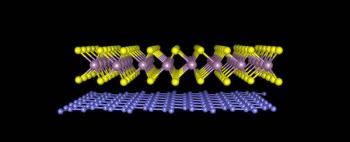Scientists at the University of Kansas managed to fabricate an innovative substance made of an atomic sheet of graphene interlocked with a sheet tungsten disulfide that could be used for solar cells and flexible electronics.

The material was formed using "layer to layer assembly" as a versatile bottom-up nanofabrication technique. The scientists then examined the motion of electrons between the layers through ultrafast laser spectroscopy, and found that nearly 100% of the electrons that absorbed energy from the laser pulse moved from the tungsten layer to the graphene within one picosecond, proving that the new material combines the properties of each component layer.
The researchers state that materials such as this carry potential for next-generation materials via atomic layer-level control over its electronic structure. Designing synergistic materials by combining two single-atom sheets can as a photovoltaic cell or a light-emitting diode, converting energy between electricity and radiation.